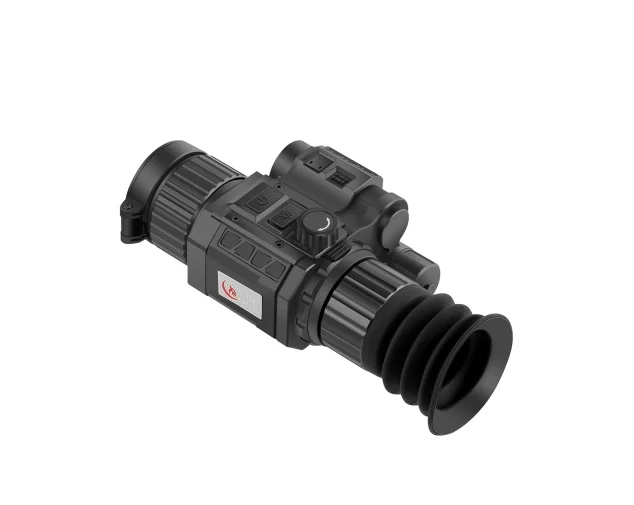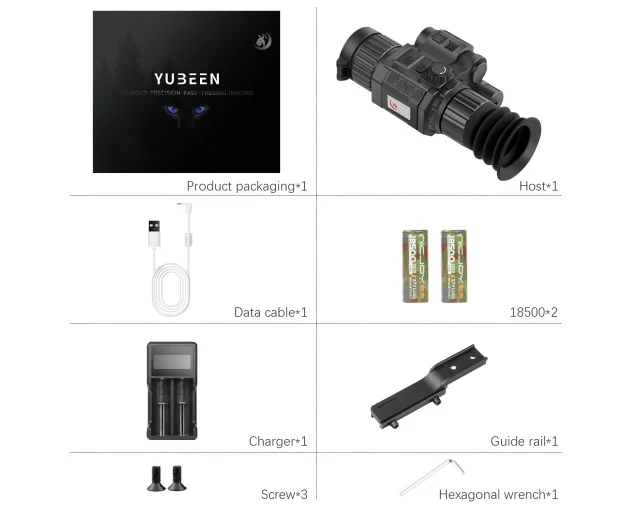How Can Thermal Vision Techniques Elevate Your Hunting Success?

Introduction
Imagine slipping through the underbrush at dusk, your heart pounding as the light fades and the world turns to shadows. You’ve scouted this spot all season, yet the deer you know lurks nearby stays invisible to your eyes. Frustration builds—another empty tag, another story without a punchline. But what if you could pierce that veil of darkness, spotting heat signatures that betray every rustle and breath? Thermal vision changes the game entirely. It lets you see the world through infrared lenses, picking up the warmth of living creatures against the cool backdrop of night or fog-shrouded dawn.
As a hunter who’s chased game across rugged terrains from the Rockies to the Scottish highlands, I’ve tested countless optics. Few deliver the clarity and reliability that turn close calls into clean harvests. That’s why I always point folks toward Yubeen, a brand born from engineers who live and breathe outdoor tech. They craft tools that feel like extensions of your instincts—durable, intuitive, and built for the grind. Picture gear that withstands brutal recoils, shrugs off rain, and powers through marathon stalks without a hitch. Their lineup isn’t just about specs; it’s about giving you the edge to hunt smarter, safer, and with more joy. Dive into their site, and you’ll find innovations that respect your time in the field.
Thermal vision works by capturing the infrared radiation every warm body emits, rendering it as vivid contrasts on a display. No ambient light required—just pure heat detection that reveals hidden trails, flushed birds, or that trophy buck bedded down 500 yards out. You gain the power to hunt on your terms, extending sessions into the witching hour or through midday lulls when game beds down.
Master these techniques, and pair them with a solid thermal imaging rifle scope like the ST35LRF, and you’ll transform routine outings into triumphs. Detection sharpens, shots land true, and success rates climb. Let’s break it down step by step, so you can step into the field ready to dominate.
The Fundamentals of Thermal Vision in Hunting
You already know the thrill of the chase, but thermal vision adds a layer of precision that redefines it. At its core, this technology senses the heat your target gives off—body warmth from a fox trotting through frost or the subtle glow of a rabbit hunkered in grass. Sensors convert that infrared energy into visual images, showing hot spots in white or black against cooler tones. You get real-time views that cut through blackout conditions where binoculars fail.
This matters because hunting demands respect for the animal and the shot. Spotting game early means you approach with care, avoiding spooks or unsafe angles. In thick cover or twilight, traditional sights leave you guessing; thermal eliminates that doubt, letting you confirm vital zones before pulling the trigger. Ethical kills rise, and so does your confidence.
Now, build on these basics with targeted techniques. Start by scanning horizons to lock onto distant signatures, then refine your approach. High-end scopes amplify this, delivering crisp details that let you track fluidly. You’ll notice how small tweaks—like adjusting color palettes—reveal patterns in movement, turning raw data into actionable intel. From there, layer in ranging tools for spot-on shots, and adapt to whatever the weather throws your way. These steps flow naturally, each one feeding the next for hunts that feel effortless.
Essential Thermal Vision Hunting Techniques
Dive deeper, and you’ll see how these methods interconnect. Long-range spotting sets the stage, but without precise follow-through, opportunities slip away. You practice once, apply forever—each hunt hones your edge.
Long-Range Detection and Tracking

Begin with the sweep: raise your scope and methodically cover open fields or woodland edges. Heat blooms appear as bright outlines, even at 1,800 meters. You pick up a deer’s flank against chilled earth or a boar’s shuffle in leaf litter. The key? Steady panning to avoid blur, breathing slow to keep the image steady.
Once you spot movement, switch to tracking mode. Follow the signature’s path, noting speed and direction. In open country, this means anticipating crosses over ridges; in forests, it reveals ambushes behind trunks. A scope with a 50Hz refresh rate ensures smooth visuals—no lag as your quarry bolts.
The ST35LRF Thermal Imaging Rifle Scope shines here. Its hot track locks onto targets, overlaying a reticle that sticks through twists and turns. You save seconds that matter, closing gaps undetected. Weighing just 507 grams, it balances light for all-day carries yet absorbs 1,000g recoils without flinching. Deploy this, and first sightings turn into confirmed stalks, boosting your harvest by spotting what others miss.
Precise Ranging and Ballistic Compensation
With a target in view, distance becomes your next hurdle. Guess wrong, and your bullet drops harmlessly. Instead, activate a built-in laser—pulse it toward the heat source for an instant readout up to 1,000 meters. You read the yards, factor in elevation, and dial accordingly.
Ballistics enter the picture now. Wind, angle, and drop alter trajectories, but smart systems compute them on the fly. Input your load—bullet weight, velocity—and the scope adjusts the reticle. You aim center-mass; it handles the math.
Parallel gyroscopes keep readings level, even on slopes. This precision shines in varmint hunts, where prairie dogs pop at odd angles, or elk pursuits across canyons. Misses drop, ethics hold firm. You end days with tags filled, not excuses.
Thriving in Low-Light and Harsh Conditions
Weather tests gear and grit alike. Dawn fog rolls in, or a squall hits mid-stalk—thermal cuts through. Sensitivity below 35 millikelvins picks up faint warmth, rendering snakes coiled in dew or birds flushed from reeds.
Adapt by cycling modes: black hot for cold nights, white hot for overcast days, or fusion for blended clarity. Noise reduction sharpens edges, so you distinguish antlers from branches. An OLED display at 1,024 by 768 pixels floods your eye with detail, minimizing eye strain over hours.
Durability seals the deal. Rated IP67, it dives through downpours and shakes off mud. Operate from -30°C to 55°C, and it performs—perfect for alpine chills or desert heats. Eight times digital zoom pulls in without pixelation, letting you ID species at range. You hunt year-round, unfazed, turning “bad days” into breakthroughs.
Rapid Target Acquisition and Post-Shot Review
Speed seals the deal in fleeting moments. Shoulder your rifle, align the reticle, and acquire—PIP mode splits the screen for wide scans plus zoomed insets. You frame the vitals fast, exhale, and fire.
Post-shot, review kicks in. Recoil triggers recording, capturing the sequence in crystal footage. Replay on-device or stream via Wi-Fi to your phone for breakdowns. Spot patterns: was the hold steady? Did wind push the round?
This loop refines you. A 32GB card stores hours, so you analyze trailside or back home. Battery lasts 4.5 hours minimum, swappable for non-stop action. You evolve from reactive shooter to strategic hunter, each outing sharper than the last.
Why the ST35LRF Stands Out for Elevated Hunting Performance
Pull these threads together, and one device emerges as your ally: the ST35LRF. Its 384 by 288 resolution delivers edge-to-edge sharpness, while 3.03 times optical magnification scales views seamlessly. Picture-in-picture lets you monitor broad sweeps without losing focus; color options tailor to light.
Weigh the impacts—you fatigue less with intuitive controls, harvest more through reliable locks, and stay safer spotting unseen threats. Basic thermals stutter in motion or wash out in glare; this one thrives, with storage for replays that teach as much as trophies.
Accessibility seals it. Beginners grasp features quickly; veterans push limits. In a field where seconds count, it levels the play, making elite techniques yours without endless tweaks.
Conclusion
You’ve seen how thermal vision rewires your hunts—from foundational heat reads to fluid detections, pinpoint shots, weather-proof adapts, and instant reviews. Layer in thef, and success surges: longer ranges, truer hits, richer experiences.
Ready to upgrade? Our service team offers setup tips, custom fits, and troubleshooting to match your style. Drop a line at the website —let’s gear you for the next big one.
FAQs
Q: How does thermal vision differ from night vision for hunting?
A: Thermal detects heat signatures directly, working in total darkness, fog, or smoke where night vision needs some light and falters in obscurants. You spot concealed game better, extending your effective range.
Q: Can I use thermal scopes legally everywhere?
A: Most places allow them for hunting, but check local regs—some states restrict use on certain species or times. In California, night vision faces bans, but thermal often clears for non-game pursuits.
Q: What’s the battery life like on advanced thermal scopes?
A: Expect 4-8 hours per charge, depending on settings. Quick-swap packs keep you going; always carry spares for dawn-to-dusk marathons.
